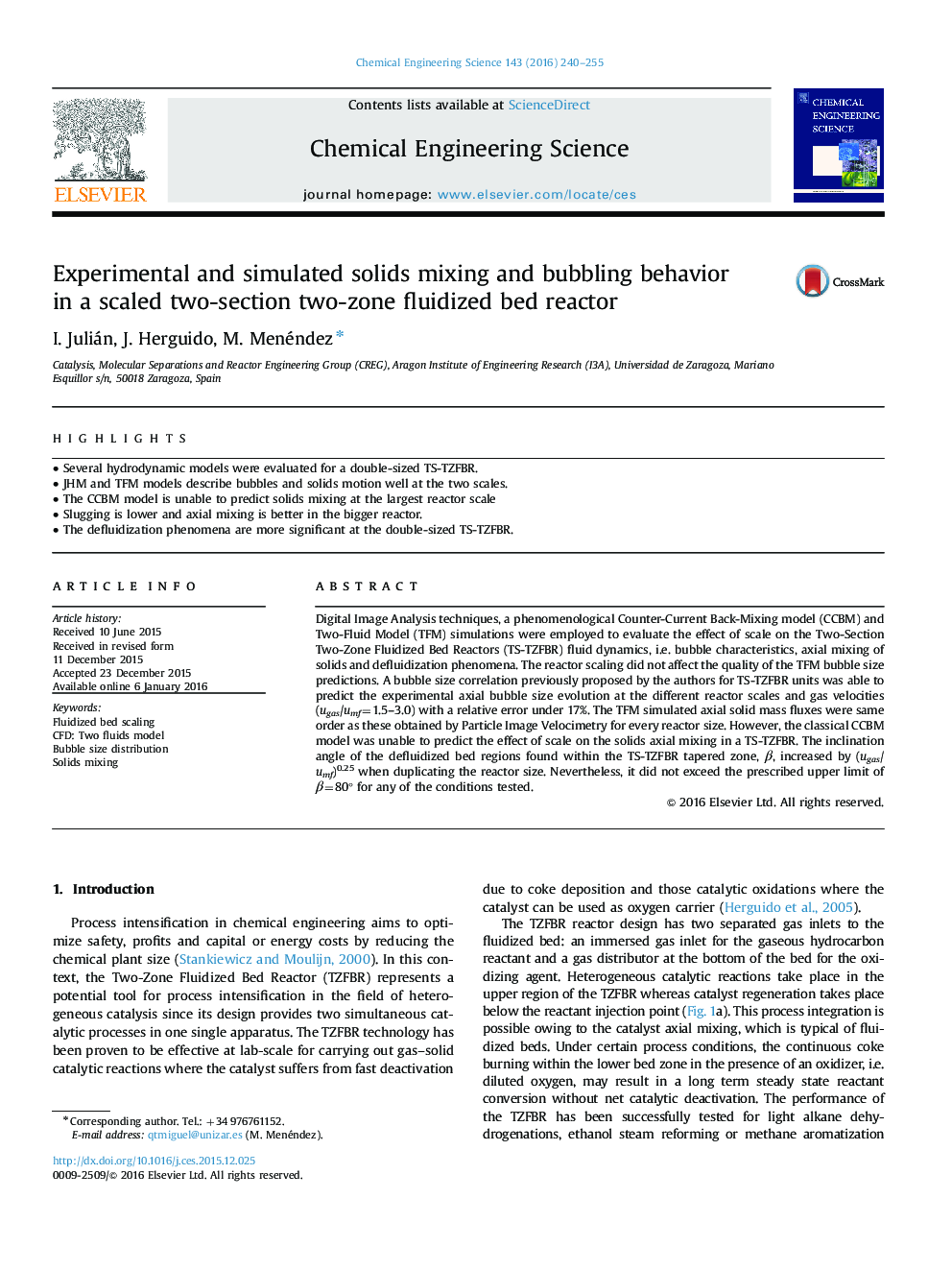| Article ID | Journal | Published Year | Pages | File Type |
|---|---|---|---|---|
| 154497 | Chemical Engineering Science | 2016 | 16 Pages |
•Several hydrodynamic models were evaluated for a double-sized TS-TZFBR.•JHM and TFM models describe bubbles and solids motion well at the two scales.•The CCBM model is unable to predict solids mixing at the largest reactor scale•Slugging is lower and axial mixing is better in the bigger reactor.•The defluidization phenomena are more significant at the double-sized TS-TZFBR.
Digital Image Analysis techniques, a phenomenological Counter-Current Back-Mixing model (CCBM) and Two-Fluid Model (TFM) simulations were employed to evaluate the effect of scale on the Two-Section Two-Zone Fluidized Bed Reactors (TS-TZFBR) fluid dynamics, i.e. bubble characteristics, axial mixing of solids and defluidization phenomena. The reactor scaling did not affect the quality of the TFM bubble size predictions. A bubble size correlation previously proposed by the authors for TS-TZFBR units was able to predict the experimental axial bubble size evolution at the different reactor scales and gas velocities (ugas/umf=1.5–3.0) with a relative error under 17%. The TFM simulated axial solid mass fluxes were same order as these obtained by Particle Image Velocimetry for every reactor size. However, the classical CCBM model was unable to predict the effect of scale on the solids axial mixing in a TS-TZFBR. The inclination angle of the defluidized bed regions found within the TS-TZFBR tapered zone, β, increased by (ugas/umf)0.25 when duplicating the reactor size. Nevertheless, it did not exceed the prescribed upper limit of β=80° for any of the conditions tested.
